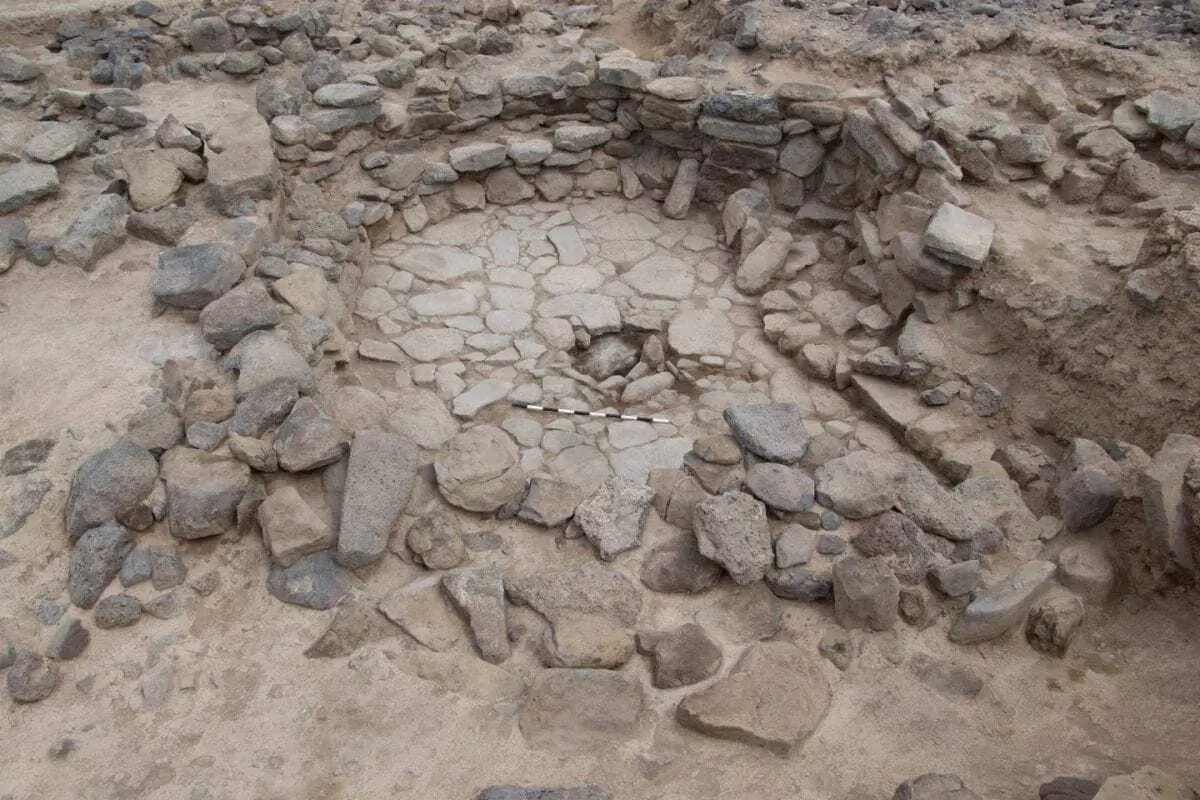11,500 years ago in what is now northeast Jordan, people began to live alongside dogs and may also have used them for hunting, a new study from the University of Copenhagen shows.
The archaeologists suggest that the introduction of dogs as hunting aids may explain the dramatic increase of hares and other small prey in the archaeological remains at the site.
Dogs were domesticated by humans as early as 14,000 years ago in the Near East, but whether this was accidental or on purpose is so far not clear. New research published in the Journal of Anthropological Archaeology by a team of archaeologists from the University of Copenhagen and University College London may suggest that humans valued the tracking and hunting abilities of early dogs more than previously known.
A study of animal bones from the 11,500 year old settlement Shubayqa 6 in northeast Jordan not only suggests that dogs were present in this region at the start of the Neolithic period, but that humans and dogs likely hunted animals together:
“The study of the large assemblage of animal bones from Shubayqa 6 revealed a large proportion of bones with unmistakable signs of having passed through the digestive tract of another animal; these bones are so large that they cannot have been swallowed by humans, but must have been digested by dogs,” explained zooarchaeologist and the study’s lead author Lisa Yeomans.
Lisa Yeomans and her colleagues have been able to show that Shubayqa 6 was occupied year round, which suggests that the dogs were living together with the humans rather than visiting the site when there were no inhabitants:
“The dogs were not kept at the fringes of the settlement, but must have been closely integrated into all aspects of day-to-day life and allowed to freely roam around the settlement, feeding on discarded bones and defecating in and around the site.”
Can new hunting techniques account for the increase in small prey?
When Yeomans and her co-authors sifted through the analysed data, they also noted a curious increase in the number of hares at the time that dogs appeared at Shubayqa 6. Hares were hunted for their meat, but Shubayqa 6’s inhabitants also used the hare bones to make beads. The team think that it is likely that the appearance of dogs and the increase in hares are related.
“The use of dogs for hunting smaller, fast prey such as hares and foxes, perhaps driving them into enclosures, could provide an explanation that is in line with the evidence we have gathered. The long history of dog use, to hunt both small as well as larger prey, in the region is well known, and it would be strange not to consider hunting aided by dogs as a likely explanation for the sudden abundance of smaller prey in the archaeological record,” said Lisa Yeomans.
“The shift may also be associated with a change in hunting technique from a method, such as netting, that saw an unselective portion of the hare population captured, to a selective method of hunting in which individual animals were targeted. This could have been achieved by dogs.”
About Shubayqa 6
Shubayqa 6 is situated on the northern edge of the Qa’ Shubayqa, around 130 km northeast of the Jordanian capital, Amman. It is the ?rst substantial early Neolithic settlement identi?ed in the Black Desert and has been under investigation since 2012; this and previous studies demonstrate that settlement in this semi-arid to arid zone was more intensive than previously thought and that the area could sustain large populations of animals and humans.
The excavations were carried out in collaboration with the Department of Antiquities of Jordan as part of a project funded by the Danish Council for Independent Research, Danish Institute in Damascus and H.P. Hjerl Mindefondet for Dansk Palæstinaforsking.
UNIVERSITY OF COPENHAGEN – FACULTY OF HUMANITIES
Header Image – One of the excavated structures at the Shubayqa 6 site. Credit : University of Copenhagen







